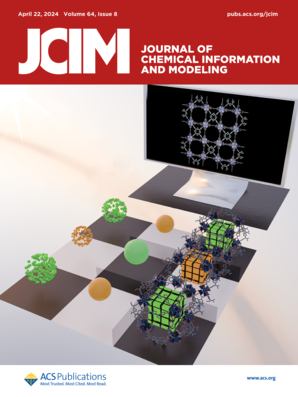结构系统生物学工具包(SSBtoolkit):从分子结构到亚细胞信号通路。
IF 5.3
2区 化学
Q1 CHEMISTRY, MEDICINAL
引用次数: 0
摘要
在这里,我们介绍了结构系统生物学(SSB)工具包,这是一个Python库,集成了结构大分子数据和系统生物学模拟,以模拟g蛋白偶联受体(gpcr)的信号转导途径。我们的框架简化了gpcr细胞通路数学模型的模拟和分析,促进了对配体- gpcr相互作用诱导的信号转导动力学的探索:配体的剂量反应可以建模,以及其他信号分子物种的浓度随时间的相应变化,例如[Ca2+]或[cAMP]。SSB工具包为研究配体结合对受体激活的亚细胞效应提供了可能,甚至在存在基因突变的情况下,从而增强了我们对分子水平上配体-靶标相互作用与更高水平的细胞和(病理)生理反应机制之间复杂关系的理解。本文章由计算机程序翻译,如有差异,请以英文原文为准。
Structural Systems Biology Toolkit (SSBtoolkit): From Molecular Structure to Subcellular Signaling Pathways.
Here, we introduce the Structural Systems Biology (SSB) toolkit, a Python library that integrates structural macromolecular data with systems biology simulations to model signal-transduction pathways of G-protein-coupled receptors (GPCRs). Our framework streamlines simulation and analysis of the mathematical models of GPCRs cellular pathways, facilitating the exploration of the signal-transduction kinetics induced by ligand-GPCR interactions: the dose-response of the ligand can be modeled, along with the corresponding change in the concentration of other signaling molecular species over time, like for instance [Ca2+] or [cAMP]. SSB toolkit brings to light the possibility of easily investigating the subcellular effects of ligand binding on receptor activation, even in the presence of genetic mutations, thereby enhancing our understanding of the intricate relationship between ligand-target interactions at the molecular level and the higher-level cellular and (patho)physiological response mechanisms.
求助全文
通过发布文献求助,成功后即可免费获取论文全文。
去求助
来源期刊
CiteScore
9.80
自引率
10.70%
发文量
529
审稿时长
1.4 months
期刊介绍:
The Journal of Chemical Information and Modeling publishes papers reporting new methodology and/or important applications in the fields of chemical informatics and molecular modeling. Specific topics include the representation and computer-based searching of chemical databases, molecular modeling, computer-aided molecular design of new materials, catalysts, or ligands, development of new computational methods or efficient algorithms for chemical software, and biopharmaceutical chemistry including analyses of biological activity and other issues related to drug discovery.
Astute chemists, computer scientists, and information specialists look to this monthly’s insightful research studies, programming innovations, and software reviews to keep current with advances in this integral, multidisciplinary field.
As a subscriber you’ll stay abreast of database search systems, use of graph theory in chemical problems, substructure search systems, pattern recognition and clustering, analysis of chemical and physical data, molecular modeling, graphics and natural language interfaces, bibliometric and citation analysis, and synthesis design and reactions databases.

 求助内容:
求助内容: 应助结果提醒方式:
应助结果提醒方式:


